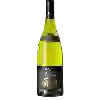
Winery LecomteLes Merisiers Quincy
This wine generally goes well with
Details and technical informations about Winery Lecomte's Les Merisiers Quincy.
Discover the grape variety: Clarin
Clarin blanc is a grape variety that originated in France (Languedoc). It produces a variety of grape specially used for wine making. It is rare to find this grape to eat on our tables. Clarin Blanc can be found in many vineyards: South West, Cognac, Bordeaux, Provence & Corsica, Rhone Valley, Loire Valley, Savoie & Bugey, Beaujolais, Languedoc & Roussillon.
Last vintages of this wine
The best vintages of Les Merisiers Quincy from Winery Lecomte are 2018
Informations about the Winery Lecomte
The Winery Lecomte is one of of the world's greatest estates. It offers 7 wines for sale in the of Quincy to come and discover on site or to buy online.
The wine region of Quincy
The wine region of Quincy is located in the region of Centre Loire of Loire Valley of France. Wineries and vineyards like the Domaine Henri Bourgeois or the Les Domaines Tatin produce mainly wines white, red and pink. The most planted grape varieties in the region of Quincy are Chenin blanc, Cabernet franc and Pinot noir, they are then used in wines in blends or as a single variety. On the nose of Quincy often reveals types of flavors of grapefruit, kiwi or stone and sometimes also flavors of oak, grass or apricot.
The wine region of Loire Valley
The Loire Valley is a key wine region in western France. It follows the course of the Loire River on its Long journey through the heart of France, from the inland hills of the Auvergne to the plains of the French Atlantic coast near Nantes (Muscadet country). Important in terms of quantity and quality, the region produces large quantities (about 4 million h/l each year) of everyday wines, as well as some of France's greatest wines. Diversity is another of the region's major assets; the styles of wine produced here range from the light, tangy Muscadet to the Sweet, honeyed Bonnezeaux, the Sparkling whites of Vouvray and the juicy, Tannic reds of Chinon and Saumur.
The word of the wine: Liqueur wine
Unfermented must with added brandy, also called liqueur wine: Pineau des Charentes, Floc de Gascogne, Macvin du Jura, Ratafia, Cartagène du Languedoc.










